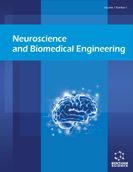Abstract
Background: The Ga-based nanoparticles are a promising contrast agent for T1-weighted MRI.
Objective: It is expected that small Gd2O3 nanoparticles will be modified with dopamine to give a relatively biocompatible surface, and even produce greater objects in nano-scale to inhibit in vivo clearance of the isolated Gd2O3 nanoparticles. Moreover, by tuning the plus sequence of MRI, the contrast effect of the resultant Gd2O3-based nano-agent modified with dopamine will be optimized. Method: A kind of T1-weighted contrast nano-agent of MRI has been developed via a facile chelation of a catechol structure in dopamine with metal oxide nanoparticles. Results: After the modification of dopamine, the Gd2O3 nanoparticles with an average size of ca. 3.7 nm formed some greater objects with a loose inner structure, and many Gd2O3 nanoparticles embedded into the formed greater objects. The longitudinal relaxivity (r1) of contrast agent based on dopaminemodified Gd2O3 nanoparticles could reach 2.11 mM-1s-1. The denser inner structure of dopaminemodified Gd2O3 nano-agent prepared for longer reaction time, together with the optimizing Gd concentration of1.00 mM and the longer repetition time, might contribute to better contrast effect. Conclusion: Compared to the Gd2O3 nanoparticles, the dopamine-modified Gd2O3 nano-agent can be presented as the higher contrast signals in T1-weighted MRI by optimizing the pulse sequence, shown as the increasing brightness of field. The character of many small nanoparticles embedding into one greater objects might contribute a better local contrast effect and inhibit the in vivo clearance of isolated nanoparticles to meet the requirement of practical application.Keywords: Gd2O3 nanoparticles, dopamine, surface modification, T1-weighted MRI, chelation.
Graphical Abstract
Article Metrics
 6
6

